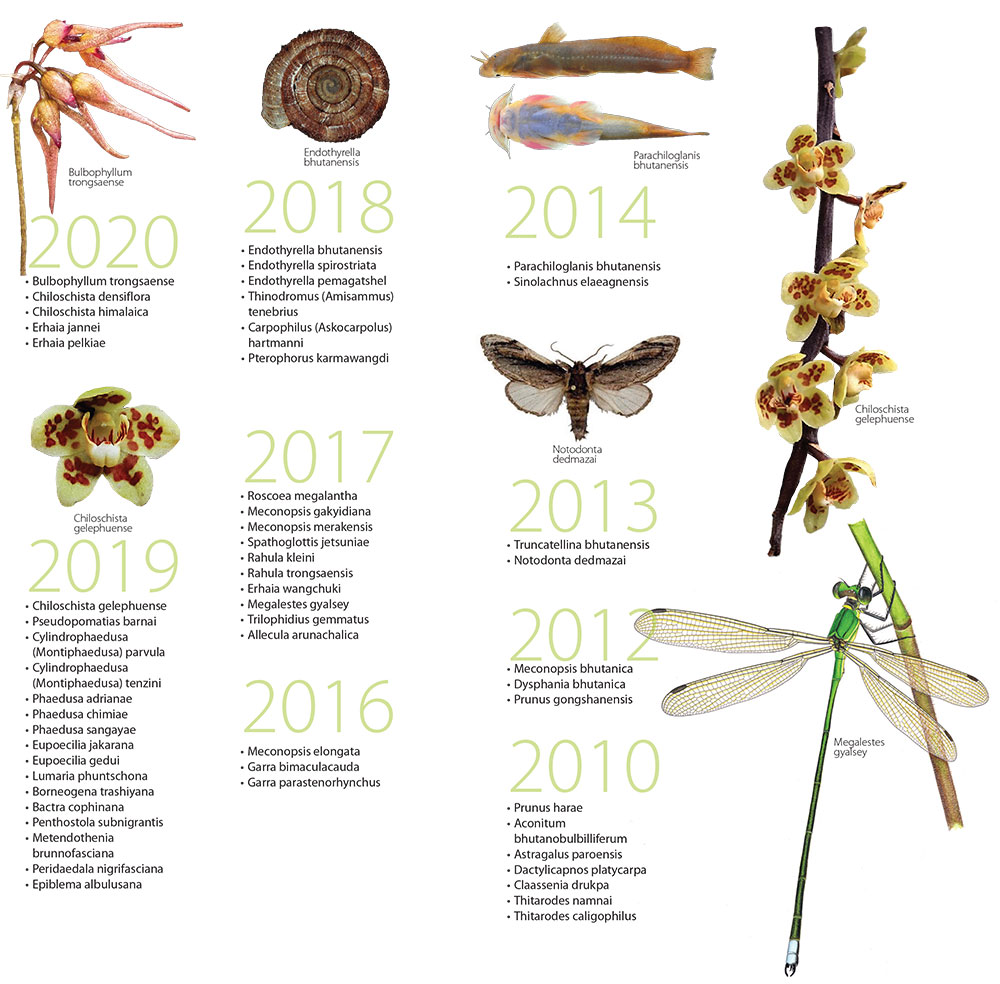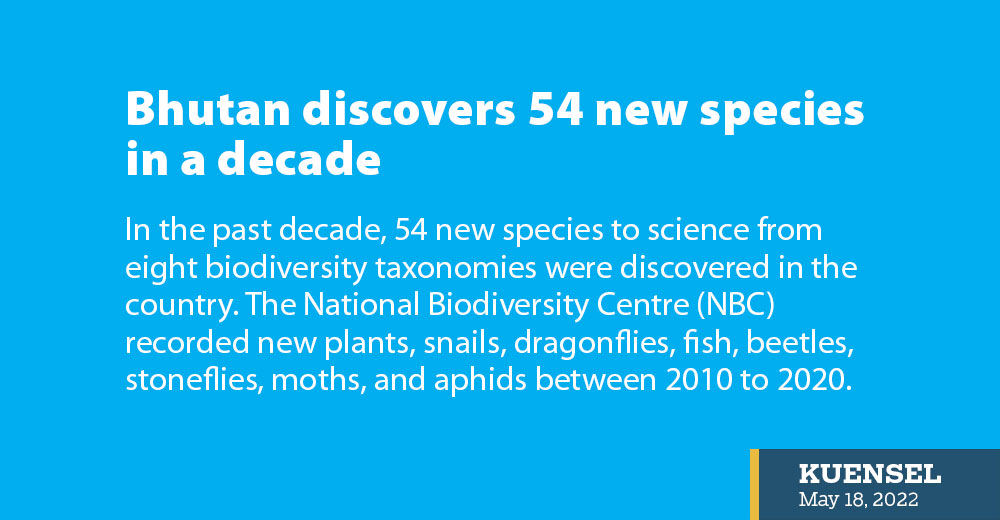Chhimi Dema
In the past decade, 54 new species to science from eight biodiversity taxonomies were discovered in the country.
The National Biodiversity Centre (NBC) recorded new plants, snails, dragonflies, fish, beetles, stoneflies, moths, and aphids between 2010 to 2020.
Officials from the centre claimed the number of new species and discoveries would increase as they could not conduct research in many inaccessible, but rich biodiversity areas.
The centre also recorded 566 new species to Bhutan between 2009 to 2017, which include birds, snails and slugs, dragonflies and damselflies, bees and wasps, true flues, amphibians and reptiles, plants, fishes, beetles, crabs, butterflies, moths cicadas, and mosses and liverworts.
The centre’s deputy chief biodiversity officer, Choki Gyeltshen, said that new species are recorded yearly because of the country’s rich biodiversity that was previously unexplored and limited study on invertebrates.
“Any time a conservationist goes to the forest, discoveries, especially of plants and insects, are made,” he said. “Previous research focused on mammals and plants.”
He said research on invertebrates is at the basic level currently. “The lack of basic research on its distribution, inventory, and specimen collection makes it difficult for the research to reach an advanced stage.”
The Biodiversity Statistics of Bhutan 2017 states that of about 8.7 million species in the world, 11,248 (0.78 percent) are found in Bhutan.
The species include vertebrates, invertebrates, insects, ferns, algae, mosses, lichens, and protozoa.

From the six-organism kingdom, Plantae is recorded highest at 47.73 percent in Bhutan followed by Animalia at 45.47 percent. Fungi kingdom recorded 6.13 percent, Chromista 0.49, Eubacteria 0.16, and Protista 0.02 percent of species in Bhutan.
Choki Gyeltshen said discovery of new species shows the richness of the biodiversity, healthy forest, and success of the country’s conservation efforts. “This also exerts the importance of conserving these habitats.”
He said that Bhutan’s biodiversity is increasing when some countries are losing it.
Meanwhile, the centre lacks funds and there are no advanced laboratory facilities.
Choki Gyeltshen said that to conduct technical works such as gene sequencing, thousands of samples have to be sent to South Korea, which becomes expensive.
Technologies such as gene sequencing aid in mapping and strengthening biodiversity.
According to the statistics book, 21 species are critically endangered, 43 species endangered, 70 species vulnerable, Brugmansia suaveolens (flowering plant) is extinct in the wild, and Eulophia stenopetala (orchid species) is extinct in Bhutan.


